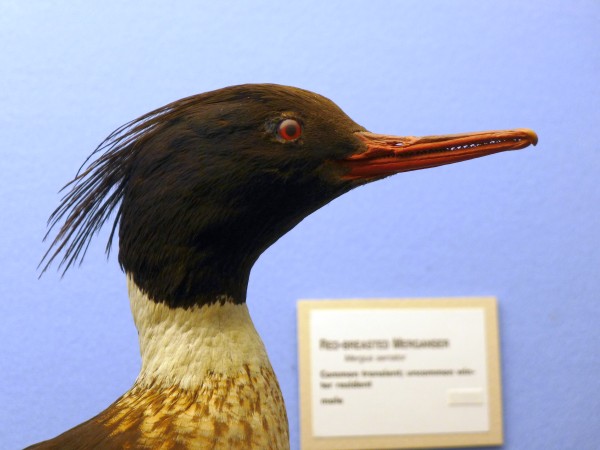
Birds are often hard to see in the field and we usually miss the details. In museums we can take a good long look. Here are three examples.
Did you know that mergansers have “toothed” bills? The projections aren’t really teeth. They’re the plates or lamellae that all ducks have, but modified for catching and holding fish. You can see the “teeth” on the red-breasted merganser, above, at Bird Hall in Carnegie Museum. Another cool thing: You can see through the merganser’s nostrils.
American coots swim so much that we rarely see their feet. This specimen shows they have unusually long toes that perform like snowshoes when coots walk on floating vegetation.
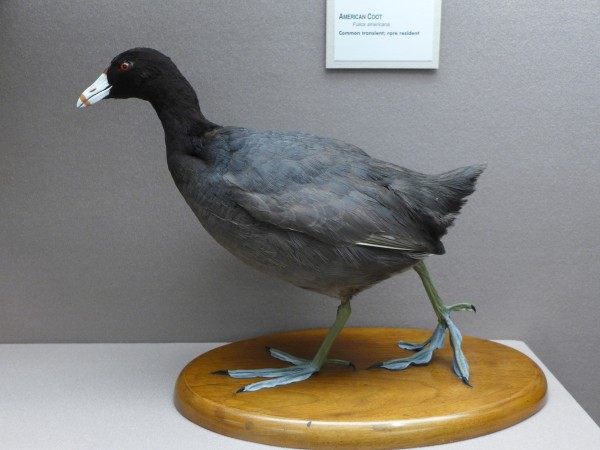
A closer look reveals two more features. Coots feet aren’t webbed for swimming. Instead they have lobed toes. And how about those claws!
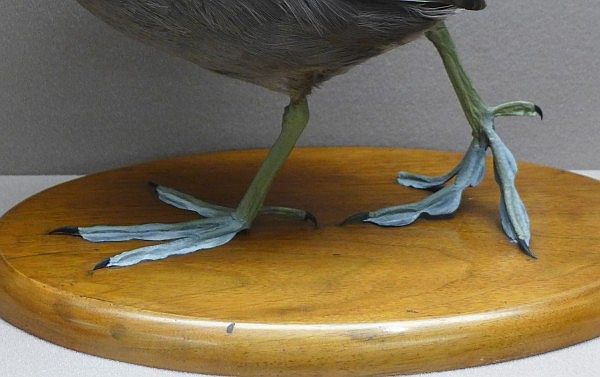
Western grebes have lobed toes, too …
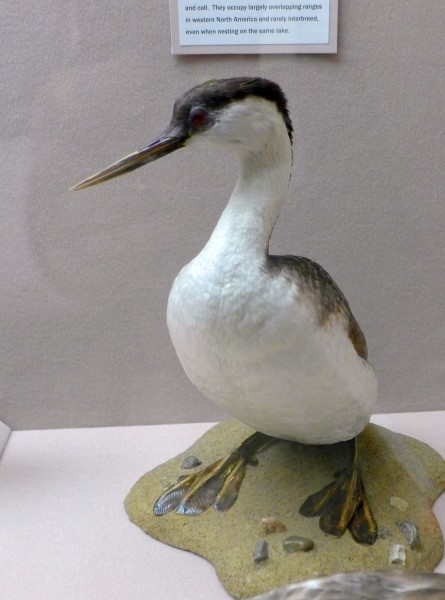
… and necks structurally similar to herons and anhingas. With needle-like bills they could stab fish if they wanted to.
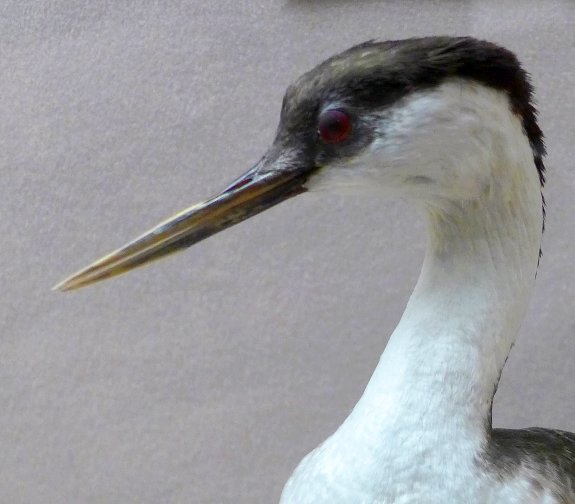
Experts can tell the sex of this bird by the size of its bill. Female western grebes have shorter, thinner bills. Do you think this one is male?
(photos by Kate St.John)
……Aaaaah Yaah!? Unless this is a trick question??
Ellie, it’s not a trick question. Thanks for answering.